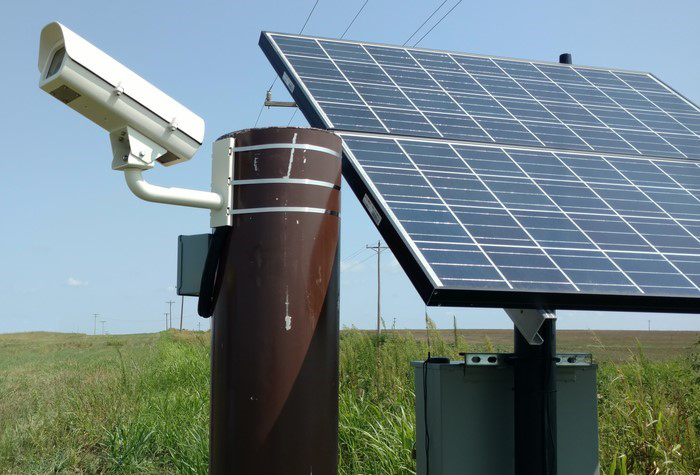Sky Imager David Romps
Published: 20 October 2021
To study consequential clouds, a California researcher employs an updated stereo camera system

David Romps, a professor of earth and planetary science at the University of California, Berkeley, studies shallow cumuli. These puffy, rain-free clouds reflect a significant amount of solar radiation into space.
Romps often relies on data from the U.S. Department of Energy’s Atmospheric Radiation Measurement (ARM) user facility, including measurements from ARM’s Southern Great Plains (SGP) atmospheric observatory. The SGP spans parts of rural Oklahoma and Kansas.
In a September 2021 paper on the life cycle of shallow cumulus clouds, Romps used SGP data to answer what may seem like a strange question: Does such a cloud behave like a bubble or a plume? That is, does it act like a quickly dissipated pocket of isolated air or more like a long-lasting fountain of air?
The answer is important. The fate of air ascending through a cloud’s base determines how big the cloud will get and how long it will last. Size and longevity determine a cloud’s albedo (reflectivity) and, therefore, its climate impact.
Romps and his co-authors got their insights from stereo cameras, Doppler lidar, and large-eddy simulations. They concluded that observed clouds tend to behave like short-lived bubbles, but simulated clouds are longer-lived, more active, and plume-like.
Because the models clash with the observations, says Romps, “there is room for improvement” in how earth system models represent shallow cumulus clouds.

Also in 2021, Romps and others used SGP data in a study on a new algorithm that distinguishes swarms of insects from clouds of liquid water. To demonstrate the algorithm’s efficacy, they drew measurements from the stereo camera system at the SGP.
The system has become a signature feature of research by Romps, often in concert with Berkeley project scientist Rusen Öktem.
Romps revived and modernized a measurement technology called stereophotogrammetry by redesigning camera placement and calibration. The technique, applied at the SGP with a three-pair array of digital stereo cameras, involves placing each camera pair about 120 degrees from another pair. The camera pairs are set at prescribed angles. Researchers use the resulting images to reconstruct the shape, height, and upward velocity of clouds.
Romps and Öktem also oversaw the development of an ARM data product, Clouds Optically Gridded by Stereo (COGS), based on data from the SGP array. Every 20 seconds, the stereo cameras record a four-dimensional (4D) grid of cloudiness that is 6 kilometers (3.7 miles) to a side.
Romps is ARM’s lead mentor for the cameras; Öktem is the associate mentor.
To learn more about research by Romps and how he came to atmospheric science, read this scientist profile on the Atmospheric System Research (ASR) website.
Keep up with the Atmospheric Observer
Updates on ARM news, events, and opportunities delivered to your inbox
ARM User Profile
ARM welcomes users from all institutions and nations. A free ARM user account is needed to access ARM data.


















